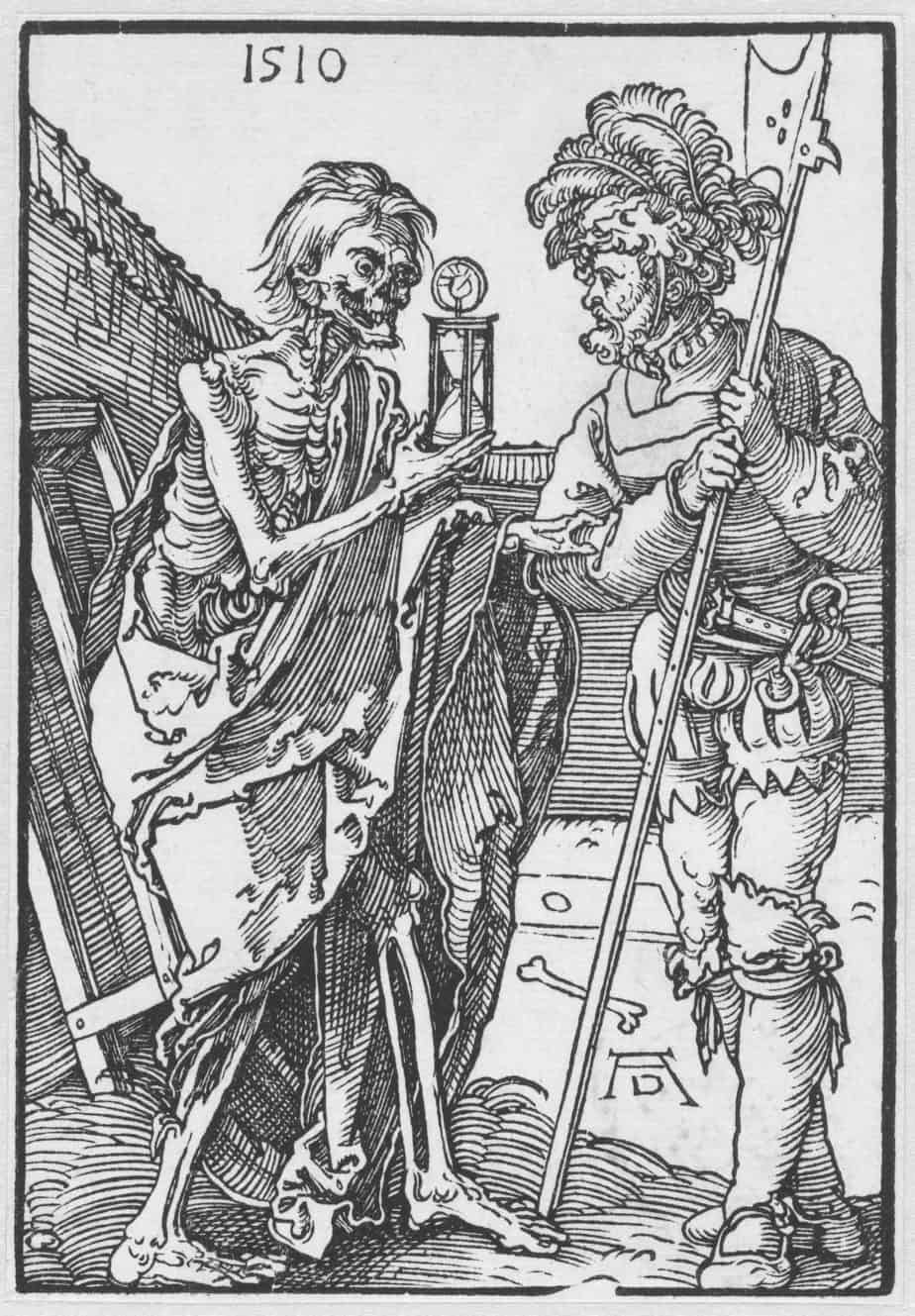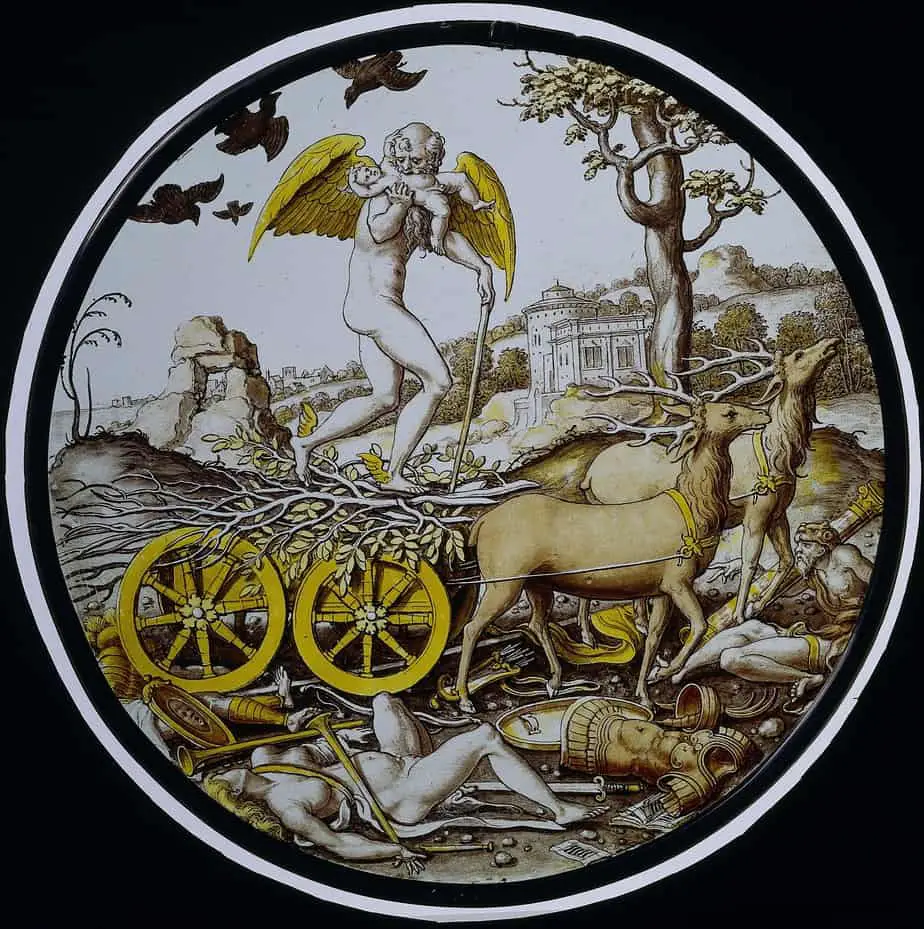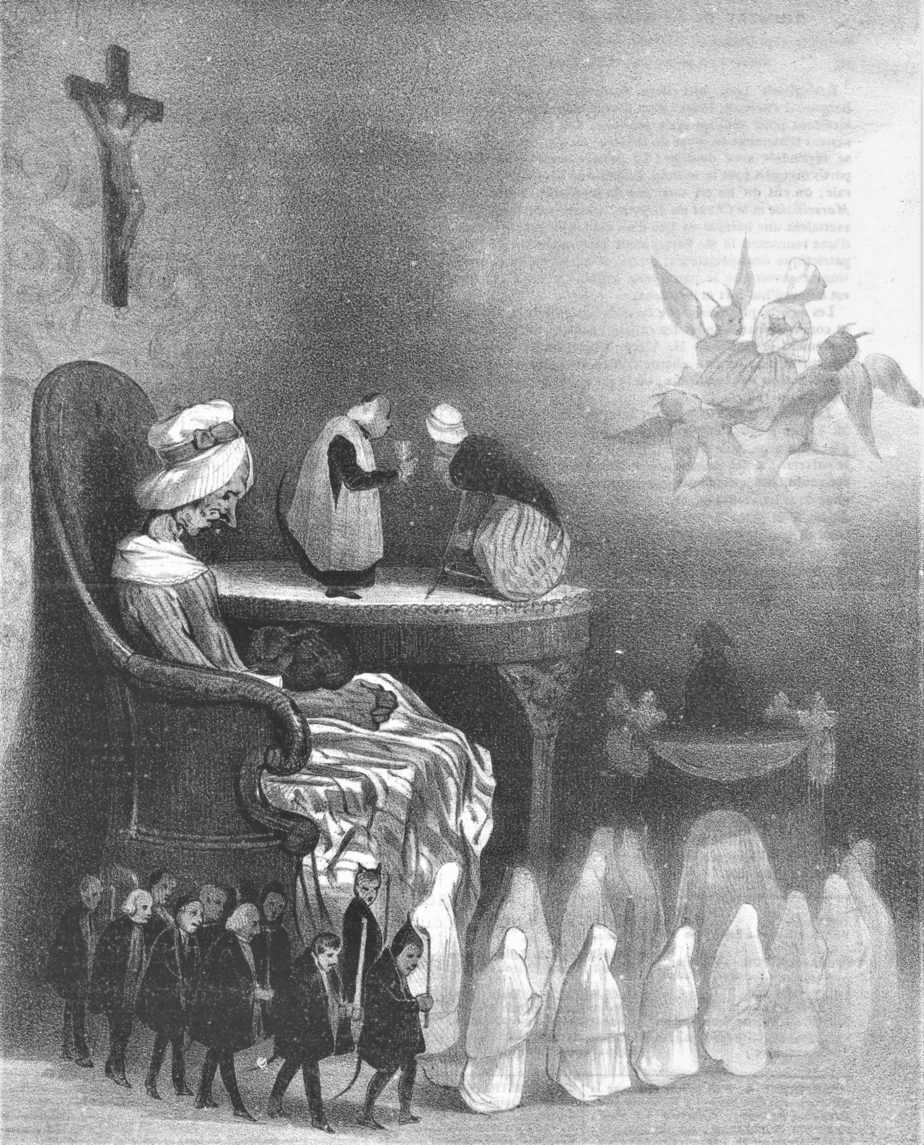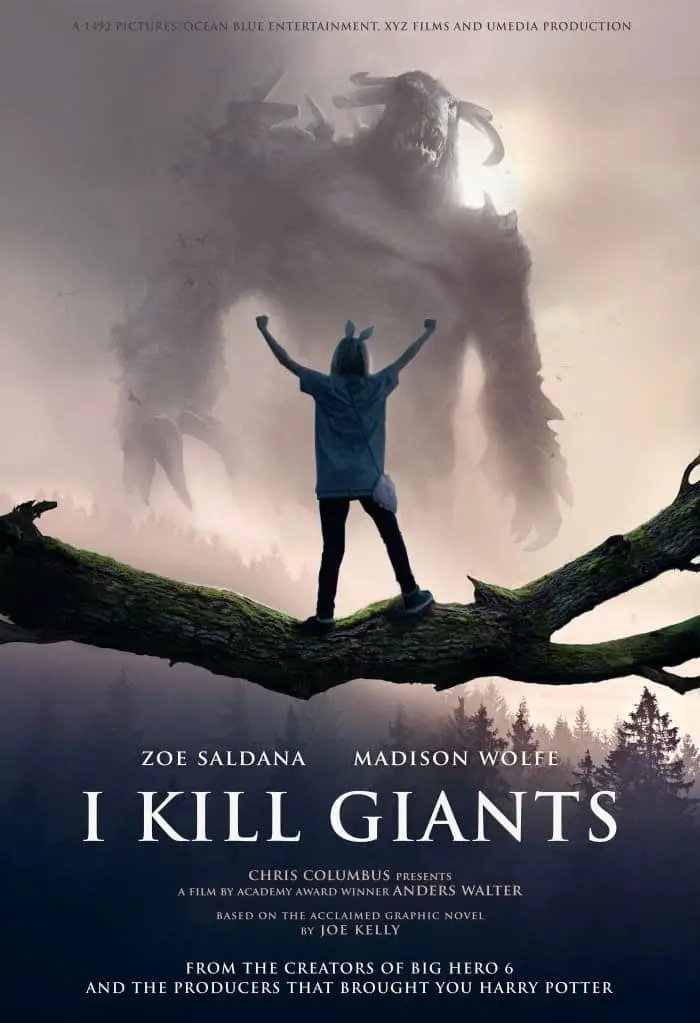I Kill Giants is an American comic book written by Joe Kelly, illustrated byJ. M. Ken Niimura. The comic series is now ten years old. This post is about the 2017 film adaptation, directed by Anders Walter. The guy who wrote the comic also wrote the screenplay. I watched it on Netflix last night with my ten-year-old daughter and trust me when I say, this is a film for the tween-adolescent crowd — a reality which is always reflected in IMDb scores (which are not graded by ten year olds, and certainly not by ten-year-old girls). That’s why it gets a paltry 6.2.
I’m interested in this film regardless, because last week I happened to be reading Disturbing The Universe by Roberta Seelinger Trites, who takes the philosophy of Heidegger — particularly his concept of ‘Being-toward-death’ — and points out that this view of life/death is perfect to describe pretty much every young adult novel. (Or film, I’ll add.) I updated my Death In Children’s Literature post last week to reflect that lightbulb moment (thanks to Trites) and it just so happens I’ve spent the following Saturday evening watching the perfect example of a Heidegger young adult movie. It’s like Joe Kelly read Heidegger (or Trites) before sitting down to compose I Kill Giants.
For the record, I don’t honestly believe that’s how creativity happens. These things are ‘in the air’. Storytellers absorb the ideas, reshuffle, re-vision, and (re-)produce old ideas using original character webs and new settings. I’ve done it myself. I can apply Heidegger’s philosophy to stuff I wrote before I’d even heard of the guy, let alone the concept. We’re all products of some big ur-Culture.
I’m especially interested by these concepts which are ‘in the air’, unnamed until someone names them — a philosopher, a literature professor, a writer in interview. It’s only then that patterns start to reveal themselves. Covert ideologies come to the fore — some of them hugely problematic. I have no major political beef with I Kill Giants; I’m interested in this children’s story because it makes for an excellent primer in Heidegger and death. Buckle in.
What is Being-toward-death?
No point me re-inventing the wheel. This idea is as old as humanity itself — we can go back at least as far as Confucius. Hard to know what that guy actually said but apparently he once said, “We all have two lives, the second one starts when you realise you only have one.” This is another way of expression the developmental stage in which we realise, at a gut level, that we too are going to die.
Heidegger came later.
- The Guardian Australia published a series on death back in 2009 (death hasn’t changed much since then — it’s still perfectly relevant). In Part 6, Simon Crichley wrote about Heidegger’s concept of death.
- I would recommend that article before delving into the Wikipedia explanation of Heideggerian terminology. (You know it’s gotten serious when the name of the philosopher has been turned into an adjective.) There’s always the source material itself, of course, which I don’t plan to read.
- If you prefer to listen, Episode 100 of the Philosophize This podcast is about Heidegger. (They transcribe their podcasts.) The next two are about Heidegger as well — the first one is about how he fits into the wider study of philosophy. His teacher was a pretty influential guy in his own right — a mathematician who turned into a philosopher. The teacher was all about certainty and truth, and how do you know what’s certain? He was right into cognitive biases, which we’re hearing a lot more of today in books such as Mistakes Were Made, But Not By Me. Heidegger took issue with a lot of what his teacher said. Basically, Heidegger wanted to dig down further and define some very basic concepts which had been glossed over. In order to do this, he had to invent his own words — not because he was being a poser, but because of genuine linguistic holes.
- So is Episode 32 of The Partially Examined Life.
Bullet-point summary of Being-toward-death:
German philosopher Martin Heidegger wrote a book which in English translates to Being and Time.
Heidegger contributed a number of different/related ideas to philosophy: Dasein (being), attitudes towards technology (‘Ready-to-hand’), a definition of the concept of ‘World’, and so on.
The one I’m interested in here is the concept of ‘Being-toward-death’. German loves capitalisation, so you can capitalise the ‘B’ in ‘Being-toward-death’ if you want. Or not, because it’s English too, now. (Minor grammatical point.) The German is Sein zum Tode.
In a nutshell: Being = time and time is finite. The reason Heidegger’s words are hyphenated is because you can’t have one without the other. There’s no ‘being’ without then dying and vice versa. (This applies to all of Heidegger’s terms which end up hyphenated in English.)
Until we understand that we’re all going to die, we are unable to appreciate the time we do have.
(Can you think of a subculture of people who think a lot about that? I can. Goths. The Goth is the ultimate Being-toward-death philosopher.)
This isn’t meant to be depressing. It’s actually liberating. Once we confront the ‘finitude’, we are freed to live authentically and fully. (Maybe this is why people’s happiness levels tend to increase after a middle-aged slump? Old people really get death, and learn to live with it?)
In order to really understand the finitude of life (ie. death) Heidegger broke it down into four different little epiphanies:
Death is non-relational.
When standing before death you cut off all relations to others. You can’t really understand death by seeing others die — you have to understand that you, yourself — yes, you — are also going to die. This has since been contested, notably by Edith Stein and Emmanuel Levinas. The fear of losing someone can be worse than the fear of dying yourself — because then you’re the one who has to deal with the grief and the mourning.
Death is certain.
There’s no getting out of it. No matter how good you are, no matter how many brassicas you eat.
Death is indefinite.
So, you’re definitely going to die, but you don’t know how long you’ve got left. We could die this afternoon, overnight in our sleep. It can happen ANY TIME.
Death is not to be ‘outstripped’.
(That’s probably a bad translation.) What the hell does that mean? Death is important. It overshadows everything else. This is what Heidegger meant when he famously came out with this first-glance bullshite: death is the “possibility of impossibility”.
Once you get all that about death, then you are in a state of Being-toward-death. You are free to live authentically.
Being-toward-death in I Kill Giants
At first I Kill Giants reminded me of Donnie Darko for a slightly younger audience. An adolescent loner, who lives in a community, is battling something supernatural and ‘crazy’, which no one else can see. In this case, the battle is against giants who circle the island. This mission preoccupies her completely. The task of killing giants causes great anxiety but also gives Barbara a superiority complex. In a story of this variety, about the possible delusions of the ‘village crazy’, we can expect a big reveal. This kind of reveal is binary in essence for we learn one of the following:
- Either the hero is proven right. This is what happens in Donnie Darko. Donnie was correct about the weird thing happening in his town. Everyone else is ignorant.
- Or the hero is revealed to be legit crazy. This is what happens in I Kill Giants. I should be careful about use of the word ‘crazy’, except that’s the accusation levelled against Barbara within the setting, and the word contains all the baggage it’s meant to.
The audience and Barbara receive this revelation at the same time (unless you predicated it somehow — I suspected but couldn’t be sure). The guidance counsellor tells Barbara, “Your mother needs to see you.” Then we learn there’s a woman-in-the-attic plot mildly reminiscent of Jane Eyre — Barbara’s mother has been upstairs in bed (probably cancer) and Barbara has simply refused to see her. Instead, her giant killing activities are an unhealthy displacement activity — unhealthy because this activity is a genuine delusion which is affecting her life.
The giant is about as metaphorical as metaphors get: Even my ten-year-old got it, though didn’t know the word ‘metaphor’; the giant stands in for ‘fear of death’, and/or mental illness in all its different forms — perhaps depression, perhaps anxiety. Bad feelings, in any case. Anticipation of grief. Dread, in other words.
Barbara has not been dressed up as a Goth (the movement has kind of moved on), but she is the modern equivalent. Barb is a bit of a scene kid, has her own style designed to stand out, but at the same time hopes to be invisible. The rabbit ears, as she explains to the new girl, represent her spirit animal. She has no respect for authority — only ‘respect’ in the sense that teachers work hard. She doesn’t respect someone just because of their position. She treats her school psychologist badly. (This is her moral shortcoming.) But first, the setting.
Setting and Being-toward-death
- To hammer home the metaphors for its adolescent audience, this story is set on an island. Islands can mean various things in story but the most obvious one is ‘isolation’. Even when surrounded by love ones, we all go into that dark night alone. Death is a supremely lonely experience. The specific island chosen in this story happens to be Long Island.
- When Barbara is taken home to Sophia’s house and find herself upstairs, she becomes upset. Obviously, there’s all this symbolism to do with houses — I wrote a post on that too — and Barbara is not only forced to remember her mother sick in bed at her own home, but ‘upstairs’ is itself closer in altitude to our notion of Heaven.
- What era is this set? Technology usually gives us a clue. Until the older sister’s smartphone rings, this story could happily exist in the Stranger Things universe, back in 1980. It helps that those big frame glasses have come back into fashion — our young protagonist wears 1980s frames which are actually very modern. But apart from that mobile phone, this story could actually be set in 1980. The story opens with a joke between squabbling brothers — one criticises the other’s hair. They both have the exact same hair — an out-dated — or perhaps timeless — cut similar to Moss’ in The I.T. Crowd. Barbara is into Dungeons and Dragons, which kicked off in the 1970s, and plays a starring role in Freaks and Geeks — this is the game that eventually unites the main Freak with the Geeks. Freaks and Geeks is set in 1980.
- Because I Kill Giants feels like a 1980, 2017 combo, this makes it ‘vaguely contemporary’. But add in the folklore of the giants, and Barbara’s explanations of the giant ur-story, and now the storytellers have achieved ‘timeless’. What does Heidegger say about time? That’s pretty interesting. In order to understand the finality of death, we do need to understand the concept of eternity. In our modern culture (not all cultures are like this, by the way), we think of time in terms of present-past-future but Heidegger considered this a mistake. In order to understand the meaning of your own life (and death) you need to understand your place within eternity — how are you different from others of your generation? From someone living 10,000 years ago? In a story which deals with the concept of death, the storytellers will very often aim for that feeling of timelessness in the setting. I Kill Giants is an excellent example of that.
- Then there’s the weather, which relates to season. The majority of the story takes place in a kind of in-between season — autumn? I’d have to watch it again to be sure it’s not set in spring. Autumn would be more in line with popular symbolism — ‘autumn years’ and all that, but it happens to be tornado season. The incoming tornado is a classic example of pathetic fallacy, and not more more can be said that Seelinger Trites hasn’t said already:
3 Recurring Patterns in Young Adult Literature
DEATH OCCURS ONSTAGE
Whereas in middle grade novels death tends to happen off stage, reported back by characters, young adult novels make the death far more immediate. We’re often right there for the death.
DEATH IS UNTIMELY, VIOLENT AND UNNECESSARY
Whereas middle grade novels tend to kill off the elderly and parental figures, young adult novels kill the young.
TRAGIC LOSS OF INNOCENCE
When the young adult character first understands the finality of death, at first it seems really tragic. But before they came to their acceptance of death they were ready for a fall. They overcome tragic vulnerability, avert catastrophe and transform the tragedy of their own mortality into some level of triumph. In this way, the young adult novel isn’t so different from “The Little Match Girl“, who came to terms with death (okay, died) but everything was okay, actually.
Character and Being-toward-death
Goth characters make good main characters in stories which explore the concept of Being-toward-death.
Barbara is a loner bordering on misanthropist. This is her presented as her main psychological shortcoming, as well as her moral shortcoming, because she’s not very nice to the new girl. She needs to learn to connect with people. This hooks into this idea that death is a lonely experience, or to use Heidegger’s terminology: non-relational. “When standing before death you cut off all relations to others.” Heidegger also wrote about how everyone is connected, in a Buddhist kind of way which he didn’t call Buddhist.
Addendum to that point: Barbara’s fear of death is fear of her mother’s death. In this respect, the philosophy of the storytellers is more in line with more modern critics who argue death of another can be as scary as death of yourself.
The anthropomorphised character of Grief (the giant) is massive because “Death is not to be outstripped.” Barbara does understand the enormity of Death at the beginning of the story — but the understanding is limited to her delusional self. She has yet to snap back into reality. This story wouldn’t have worked so well if she’d turned Death into, say, a fairy or a goblin. Giants are huge just as Death overshadows everything.
There are a number of separate Battle scenes in the battle sequence of I Kill Giants — as is pretty usual in storytelling. We have a big struggle between non-family peers (the bullies are basically the giant, too — Barbara has drawn inspo from the bully scenes*). There’s the conflict within the family, in which the older sister is trying to hold things together. The sister also provides a reflection character in which she shows her difficult emotion to others, but unlike Barbara the sister’s dealing with the real emotion, not with a fantasy. There’s the conflict with the kind and well-meaning adult who is an opponent simply because her goal is different (the school psychologist — who has a surprising amount of time to spare for Barbara, but hey, this is a fantasy school). Then there’s the Big Battle scene with the Big, Bad Baddie — the fantasy of the fight with the giant, who isn’t real, but for story purposes he is. All of these big struggle scenes are of course proxy for the main big struggle — the entirely internal, non-big struggle — Barbara’s refusal to see her mother… and to confront death.
There are several key scenes in which we see Barbara coming to terms with death: In one of the first she meets her psychologist’s baby and says, “He’s going to die. We’re all going to die!” Then she runs off like the little Goth that she is. That’s pretty much Heidegger, word-for-word. “Death is certain.” Barbara has at some point had that part of the Self-Revelation regarding death. Hey, it was a rough day.
Then there’s the part where the giant tells Barbara, “I haven’t come for your mother. I’ve come for you.” This is a major, on-the-page anagnorisis — an absolutely typical anagnorisis, content-wise, in an adolescent story about death: Your mother is going to die soonish, but you’re going to die, too. You won’t know when. I’ll be lurking here, waiting. The giant tells her that every living thing must die. This is a concept you won’t find in stories aimed at adults. As Roberta Seelinger Trites has pointed out, this is specific to the developmental stage of being adolescent.
Continuing down that line, for the typical adult viewer, I’d say the New Situation phase of this movie is a little — well, a lot — too hokey. For the bulk of the film Barbara is confronting all four stages of Heidegger’s Being-toward-death — literally a minute later, after a cut to a new school year, new, summery-lighting, we’re watching a completely different character in the same body, standing confidently in class telling everyone about her summer and how everything was great. A subsequent scene shows Barbara telling her psychologist that death is not to be feared. Perhaps this is true — it’s a very common ideology in story — but it’s okay for death to still be sad, right? We see melancholy in the final scene as Barbara sleeps in her mother’s now-empty bed, but the emotional flip after the anagnorisis phase is too heavily juxtaposed. Do characters need to change in a story? Yes, in a dramatic arc they do. The question is how much. Barbara has gone from fearing death to the point where she couldn’t live an authentic life (symbolised by residing in a fantasy world) to an almost mystical acceptance of death as a Good Thing. I’m not quite on board with that scope of change. I don’t buy it for one thing; the bigger problem is, I don’t even want that as an aspiration in a sympathetic character. Instead, Barbara has veered from one brand of crazy to another, and I don’t believe that was the intention.
*By the way, the bully scenes don’t strike me as especially realistic — these girls are too old to be engaging in slamming-against-locker, grab-around-the-throat, surround-on-the-beach type stuff. That’s not to say it never happens like that — this kind of bullying looks like something to an outsider, which is why it’s so appealing on screen, even when bullying has typically become far more covert and insidious by the developmental stage otherwise depicted.
Takeaway Points for Children’s Writers
My ten-year-old enjoyed I Kill Giants because despite the heavy subject matter — the grief around a dying mother — this story conforms more to middle grade fiction than to contemporary young adult storytelling:
- Death happens off the page. In young adult stories it often happens right there in front of us.
- Death happens to an older generation — the mother. In , young adult stories death tends to happen to same-age peers; in middle grade, it’ll be a parent, grandparent or something the same age.
- Before telling stories about death, what are our own feelings about it? What’s the end-game, emotionally? For our characters, for our young audience, for us? Helen Garner is an Australian author who writes for adults, but I like what she has to say about her novel The Spare Room: There are many ways of dealing with death. You’ll see every scenario play out in real life, and complete denial is one way of dealing with death. People do it every single day, folks. There are people who will die this afternoon, who should probably know they’re going to die, but they continue to deny it. And then they die. And that was okay, too. Where do you stand on that? Would that be an acceptable ideology in a children’s book? (If your answer is yes, you’d be breaking a long, established pattern!)
- I Kill Giants has been described as magical realism, but is it really?



SEE ALSO
Being-toward-death is a philosophy term. Psychologists talk about “mortality salience“.

